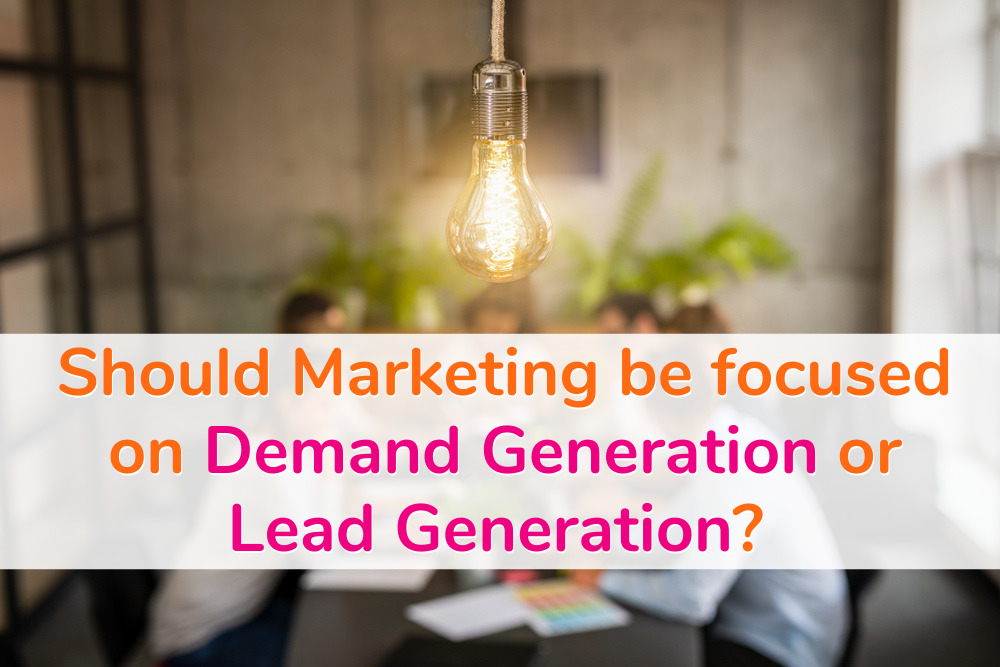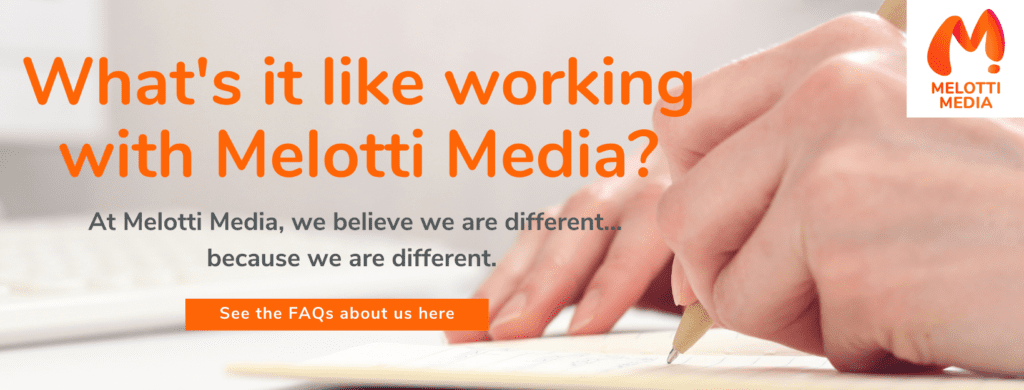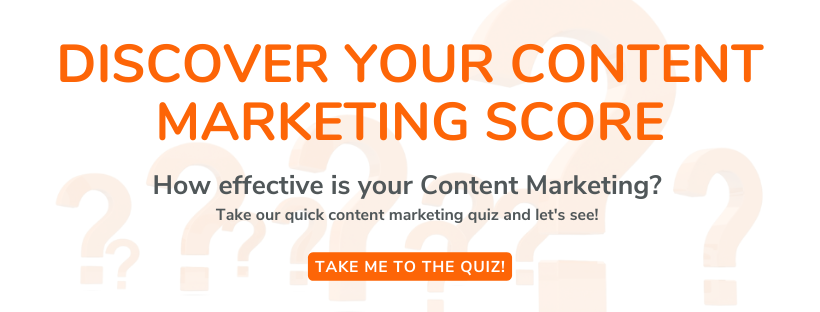
Prefer to listen, rather than read? Here's the Podcast summary!
If you’re a business, then you’re probably focusing your marketing and sales on generating leads.
That’s the normal approach.
Your marketing attracts leads which you then qualify and nurture before they enter the sales journey to convert into paying customers and (hopefully) delighted advocates.
That’s lead generation marketing
All of your time and resources are focused on obtaining that next lead. However, there is a glaring problem. You’ve skipped a step, which means you’re reactively fishing for leads in a limited pond.
That’s because lead generation relies on the current existence of demand for what you do. If there’s little demand, then leads can be a big challenge. However, when you have more initial demand for your product or service, then you’ll have a full and thriving ocean to trawl leads from.
That’s why you want to use your marketing to generate demand before you generate leads.
That’s demand generation marketing

The smartest approach your business can take is to be proactive and create your own demand, rather than sit and wait for it to eventuate.
If you proactively increase demand for your product or service, then you can build a stronger pipeline.
How demand generation vs lead generation works is simple.
Demand for your product or service starts with:
- awareness of a relevant need by your customer
- education about a possible solution
- your customer identifying that solution as applicable to your needs
- positioning your brand as the solution option
- interest is piqued
Thus, demand is generated! Ta Duh!

After you’ve built this demand-curious audience, it’s time to generate leads, which are those who actually want to take action and are part of your ideal customers.
To generate leads, you can:
- Use marketing to channel their demand into learning
- Provide multiple touchpoints for them to interact with your brand
- Offer evidence to reassure them
- Separate general demand from qualified target customers
- Inspire action into the sales funnel
- Nurture their interest
See how it’s a flow-on process?
More demand leads to more leads. The more demand you generate, the higher the percentage of high-quality leads you’ll have and the more sales you make.
If you just start with lead generation, then you’re always in reactive mode, hoping there’s enough demand. Whereas if you are proactive with the demand generation stage, then it will amplify your lead generation marketing.
How do you create demand for your brand rather than hunt for existing leads?
Well, that’s exactly what I’m going to explain.
Using demand generation marketing, you can access and nurture more qualified leads for your business and, in turn, convert more sales and increase your revenue.
Ok, let’s start by defining the actual differences between demand generation marketing versus lead generation marketing.

What is demand generation?
Demand generation is how your business reaches new markets and creates enthusiasm for your products, services and brand. Demand generation is about increasing brand awareness, educating audiences and fostering initial engagement.
The best way to implement demand generation and draw more interest is by creating marketing content, such as:
- blog copywriting
- filming videos, recording podcast
- newsletter and emails
- FAQ pages
- inbound marketing strategies and
- other forms of content marketing.
Essentially, you’re establishing your brand as a key opinion leader that deserves to be noticed across all different channels.
What is lead generation?
Lead generation involves taking this demand-induced audience who are interested, and advancing their engagement by nurturing their curiosity, with the goal of encouraging them to take action by leaving contact details and becoming a paying customer.
This involves convincing them that what you offer will solve any relevant needs they have, so they have no choice but to buy!
The best way to implement lead generation is by building on the demand generation content to create more actionable opportunities such as:
- linking to landing pages with Calls To Action
- offering a packages website page
- holding conferences and events
- creating sales collateral
- building an effective website with conversion points
- writing a corporate capability document

You have to have demand before you can have leads
So, as you can see, demand generation and lead generation are two separate types of marketing, with the major difference being that demand must be present before you can kickstart your sales process. That means that, when used together, both will fill your pipeline, expand your reach and drive better results.
Here’s how to make demand generation and lead generation work in synch.

Demand Generation: making sales with proactive marketing
Demand generation is obviously about sparking more demand for your services.
This involves:
- becoming a respected thought leader in your niche
- offering applicable value to your audience
- establishing your brand’s position
- using marketing content to ensure you’re always top of mind
- being present across a range of different touchpoints
This means that you’re essentially as present as you can be. Everywhere.
If your brand is super proactive, it means you don’t have to rely so much on expensive advertising to get people to hopefully show interest in what you do at a transactional level.
Demand creation is incredibly cost-effective, gives you greater control of your marketing and provides a strong competitive advantage.

Lead Generation: making sales with reactive marketing
So, as I said, to generate leads, you need to have demand first.
If there’s not much demand, then your lead generation marketing is being wasted as people either don’t care or the leads are poor, meaning they won’t convert.
Don’t get me wrong – you need to conduct lead generation marketing, like Google, Facebook and LinkedIn advertising. But while they promise a huge exposure, hardly anyone will click as the prework hasn’t been done first.
If you have successfully created a lot of demand, then lead generation becomes much simpler. Now, you just have to set up a series of conversion channels for people to take the next step. For instance, allow them to book a free demo, buy your product or secure their first consult.
Are you ready to reframe your marketing mindset?
It’s not enough today to think, “dollars in, leads out”.
This is wasteful and has diminishing returns, especially with such a discerning audience of highly savvy customers out there today.
They want you to earn their attention and cultivate trust before they’ll consider taking action towards converting.
That’s why you need to have a clear content marketing strategy and have a really great freelance copywriter by your side to produce thought leadership content on your behalf to empower your demand generation and support your lead generation process.
Branded content will fill your entire marketing funnel from top to bottom so long as you’re proactive across all channels with a valuable and consistent message.

How can Melotti Media help you create brand demand through content?
To engage your customer and achieve ongoing business success today, you need a powerful message, quality copywriting and consistent content. However, this is easier said than done.
Perhaps you’re time-poor and spread thin, or writing may not be your expertise.
So, let us take care of your message marketing, copywriting and content marketing needs!
For more information or to speak to a quality marketing copywriter to get the results your business deserves, contact me now at enquire@melottimedia.com.au.
Our Message Marketing services can sharpen your words to achieve your goals, today.
Christopher Melotti
Melotti Media | Copywriting & Message Marketing Bureau
www.melottimedia.com.au










